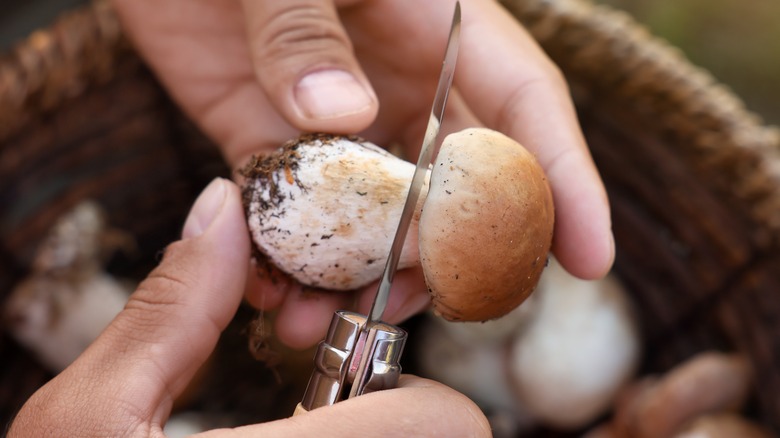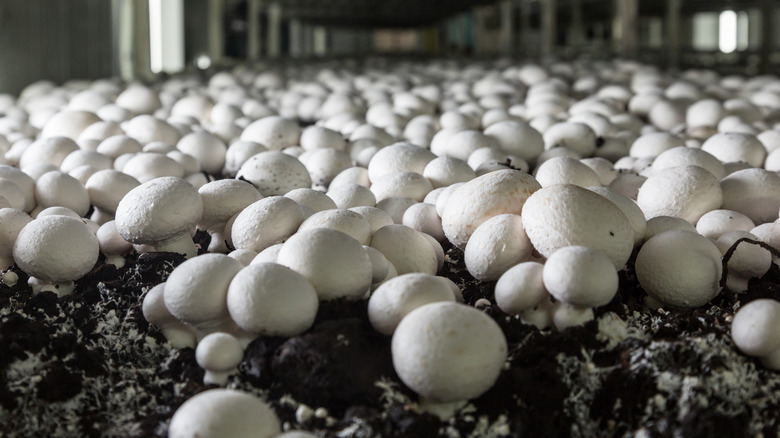Why You Can Stop Peeling Mushrooms
Regardless if you're preparing creminis for a mushroom risotto, portobellos for a mushroom burger, or shredding oyster mushrooms for vegan carne asada, mushrooms are a tasty and versatile fungi that can be easily added or substituted in a wide range of meals. Whether they're sautéed and used as a topping, or stuffed and served on the side, mushrooms have a neutral palette and sponge-like consistency that will take on any of your favorite seasonings or marinades seamlessly.
However, if you're someone who is used to peeling your mushrooms, "seamlessly" might not be the first word you think of when cooking with them. Surely, the thought of doing so comes in good reason — people peel a lot of other vegetables, so why would it be any different when it comes to mushrooms? The truth is that peeling your mushrooms is an unnecessary step, one that's costing you time and wasting food (via Foodiosity, My Food Book).
The truth about mushrooms
As Foodiosity explains, mushrooms aren't like other vegetables. To start, they aren't really vegetables at all, they're fungi. This makes their flesh much softer and more porous than the other non-fungi produce you buy from the store. For this reason, rinsing mushrooms isn't recommended, as the mushrooms will only absorb water content (via My Food Book). There's also no need to peel your mushrooms because the environments they come from are extremely sterile.
So now you're probably wondering how you're supposed to clean mushrooms at all, given that peeling and rinsing are both out of the question. According to Joseph Rizza, executive chef of Prime & Provisions, the best way to clean mushrooms you find at the store is by rubbing them with a dry cloth or paper towel (via Allrecipes). This is because mushroom varieties like portobellos, buttons, creminis, and any others you find packaged at the store are grown in a special type of heat-treated dirt that is not only free of plant pathogens, but is moist and easy to remove.
This cleaning method also avoids the aforementioned water absorption issue — which inevitably results in bland, slimy mushrooms. However, if your mushrooms are especially dirty or were grown in the wild, you may rinse them. Just ensure that they're dried thoroughly before cooking.

